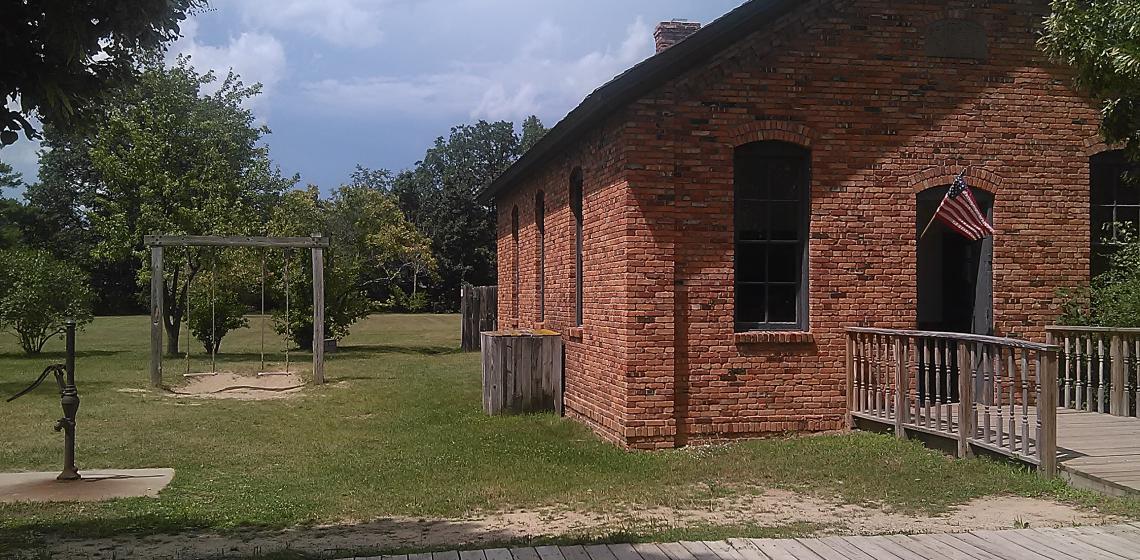
In 1967, local individuals and organizations realized that many structures of historical importance in the Flint area were being destroyed, and plans for the construction of interstate highways and urban development would necessitate the demolition of additional buildings. There was also a realization that rural skills, equipment, and crafts were being lost.
In the following years, several buildings were donated and moved to the present site. Eventually, ideas to create a farm museum and preserve buildings of historic importance merged into the concept of a rural village. Impetus came with the realization that the nation’s bicentennial was fast approaching. The plans for this hypothetical Crossroads Village evolved from the common characteristics of rural villages in Genesee County as depicted in the 1873 Atlas of Genesee County. The Village, dedicated July 4, 1976, became a reality.
The first building reconstructed from largely original materials was the Stanley School. The first buildings to be replicated were Dr. Barbour’s Office, and the Fenton General Store and Opera House. Moved from Fenton, Michigan, this building includes a second-floor opera house and a U.S. Post Office on the first floor. The opera house was used by churches, schools and fraternal organizations. Last used in 1975 as a dime store, the structure torn down and rebuilt at Crossroads for the 1978 season. The opera house was completed in 1980. Some of the original bricks, ceiling beams, and window casements were used in the rebuilding.
Effort was made to furnish all of the buildings with artefacts of the period 1860-1880 and create an impression of a “living village” with the sights, sounds, smells, and activities characteristic of that period. You can experience a day in the life for yourself surrounded by authentic and replica buildings and artifacts. Some buildings, such as the Atlas Grist Mill, had to be slightly modified to operate in present day (i.e. the Grist Mill is no longer water powered. Rather the stones are powered by an electric motor), but the processes of daily tasks are still the same.
Interpretive craftspeople, thoroughly grounded in the ways of a century ago, give life to the Village. A good interpretive craftsperson gives meaning to the things visitors see and the life and times of the post-Civil War era in Genesee County. Through interpretive methods, such as role playing, they project to visitors an understanding of the people who lived here, their origins, education, skills, values, religious and social customs, and the many tasks and problems that comprised daily living.
Text source: geneseecountyparks.org
